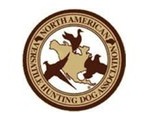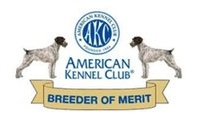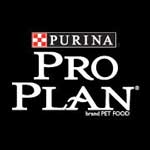How large is a GWP? How much do they weigh?
The standard calls for a medium sized breed with males 24 – 26 inches and weigh 60 – 75 lbs; and females 22 – 24 inches at withers and weigh 50 – 60 lbs. Not all GWP’s conform to these heights and weights. This breed must be a size capable of hunting and working in an effortless manner that doesn’t tire quickly.
How long do they live?
The average longevity for the breed is 10 – 12 years of age. A relatively hardy breed, many live to be 13 years and some longer. Considered seniors at or around the age of 9, some may require a change in diet and activity level because they will continue to try to work as they did as a younger dog.
What do they eat and how much?
It will depend on their age and activity level. All GWPs should be fed a well-balanced food designed for active dogs that usually contains a higher fat/protein ratio content in addition to essential trace vitamins and minerals. Puppies and developing young dogs should be fed a diet developed specifically for their needs. Depending upon its age a young GWP may require feeding more than two times in a day. It is recommended to use the same type of dog food and follow the feeding schedule used by the breeder. Once they reach adulthood being fed twice a day; AM & PM is sufficient. Adults may eat from 2-5 cups of food a day, depending on their individual metabolism and activity. A dog training hard or hunting in cold weather will require substantially more than one simply going on walks and sleeping on the couch. Because the breed is subject to bloat or torsion they should not be fed immediately after running or other demanding exercise nor should they be allowed to run or exercise for at least an hour after eating and drinking. The ideal evening mealtime would be after the day’s exercising and activities are through for the day.
*We exclusively feed and recommend Purina Pro Plan
Where should they live/sleep?
The Breed was not developed to be kennel or pack dogs but to interact with their owner and family. A GWP that gets a lot of exercise and interaction with family makes a great housedog. If not in training or hunting they must have a secure area to exercise or be taken on regular runs where they can let off steam. A GWP that is not exercised regularly will find a way to release pent up energy regardless if kept inside or outside. Crate training is recommended for various reasons. It helps with housebreaking the puppy and allows the adult dog a defined place to sleep and be confined when not allowed controlled freedom in the house. Because of their curious nature and high activity level, it is best if young dogs sleep in a confined, secure place, such as a crate. This assures that the dog does not “accidentally” get into trouble during the night when he wakes up and is unsupervised. Older, mature dogs that have proven themselves trustworthy housedogs, can be allowed to sleep unconfined at their owners discretion.
What are the grooming needs of a GWP and how often should they be done?
Maintenance of the GWP “should” minimal if they have a proper coat.
The ear, because of its shape and fold, doesn’t allow for adequate airflow thus providing a warm moist environment conducive to yeast infections in the ear canal. Your vet can demonstrate proper ear maintenance to you and regular cleaning with mild solution, designed for ears, will help keep this area under control.
Good dental health is a must. The family dog can be taught at a young age to have its teeth brushed with a toothbrush and toothpaste formulated for dogs. Under no circumstances should one use toothpaste formulated for people because it contains an ingredient harmful to dog. Also, provide chew toys that are designed to clean teeth and stimulate gums. Don’t give hard bones or processed hooves as they may cause damage to the teeth of dogs that chew aggressively.
Toenails should be kept trimmed. Long nails can be hazardous to the dog running in the field or in the kennel run by getting caught in something and possibly torn off. Besides bleeding profusely the dog’s foot will be tender and sore until the nail grows back. A puppy can learn to have its feet handled at a young age and its toenails trimmed. It is best to do them once a week and remove only a small portion from the ends being careful not to cut into the quick. Also, if the toenails are long it can affect how the dog walks and bears weight.
Shedding……YES, and we’ve found that the better the coat, the more they shed. The dark hair shows up on the light stuff and white hairs on the dark stuff!! Regular brushing, and using a Furminator deshedding tool, along with periodic baths will help to some extent. It is best to use a mild shampoo or one formulated for dogs so as not to strip essential oils from their coat. One also needs to be careful to keep soap or water out of the ears and eyes when washing the head. A good quality, balanced food with essential fatty acids will help to keep the coat healthy and may help reduce shedding. A healthy, parasite free, clean GWP will shed the least possible.
How much exercise do they need; how frequently?
GWPs were bred to be hunting dogs and as such require daily exercise. If they are not in an active training program then a daily routine that includes some form of exercise preferably morning and evening. The ideal would be time to run and/or play in a secure fenced area; at least a half hour AM and PM. If you do not have the facility for that a brisk morning and evening walk or jog are essential. Swimming is also a good form of exercise. City dwellers may have to be more creative with providing their healthy high energy GWP a daily opportunity to blow off steam and stay in condition, maybe a treadmill type dog jogger, or a local dog park where a ball or frisbee can be safely chased.
What toys and supplies do I need to buy?
A sturdy collar with clearly marked identity tags and two different lengths of leashes. One for keeping the dog close to one’s body and the other to allow the dog a bit more distance away. A retractable lead, i.e. the flexi lead is fine as long as the individual understands it can be dangerous to both the dog and owner if used improperly. The flexi was designed to keep the dog close by with the lock feature “on” or “off” with the recoil feature active to allow the dog to move further away. The dog should not be allowed to wander about and become entangled in the cord because the recoil is not activated nor should the dog be allowed to run and hit the end of the flexi with full force as the cord can break or the handle jerked out of the hand. Flexi’s were designed for different weights and it is important to have the correct one for the dog’s adult weight even when using with a puppy or young dog. Dogs need to “checked” and not allowed to hit the end of the lead at full stride.
One should never put their dog’s name on the id tag. Should the dog be taken on purpose the person will then know its call name. The id tag can simply be marked, “I’m Lost” or “Please Return” along with a contact number. Dogs should always wear some type of collar and identification when outside even for short periods of time in their own yard. It is best if the dog has a microchip implanted under the skin between the shoulder blades and registered with the AKC’s Reunite program (We microchip all puppies before they leave Claddagh). The microchip is about the size of a grain of rice and contains all of the necessary information to contact the owner should the dog become lost. Most vets, shelters and other like type organization have a universal scanner to check for microchips. It is recommended to have the microchip implanted by a Vet or an agency that does this on a regular basis. Be careful of loose fitting collars and dangling tags when the dog is confined to his crate or running in the field as there is the possibility of it becoming tangled or caught on something causing harm to the dog. A “choke style” collar should only be used in specific obedience training situations and never used when the dog is off lead or out in the field hunting. Only snug fitting flat collars with a flat id tag attached by rivets should be used in the field. Be prepared to buy more than one type and size of collar to allow for the growth of the puppy into the adult sized dog and the type of training.
A stainless food bowl and water bucket work best for a couple of reasons. They don’t break are easy to keep clean because the surface doesn’t harbor germs and won’t cause contact dermatitis like some of nylon or non- ceramic bowls.
A crate is a must. It should be large enough for the dog to stretch out and stand up and turn around but not so large that it does not provide the secure “den” feeling that dogs instinctively seek. There are various types, wire and plastic. Different situations call for different crates, be sure the crate chosen has a secure method of fastening the door so it can’t be pushed open. Wire affords good air circulation, but is not as secure to the dog as a plastic crate. Plastic crates are required by the airlines should there be a need to ship the dog. Bedding that can be easily washed. Some look really nice but if the dog has an accident it would be difficult to clean properly. Plastic backed items may work well as a moisture barrier but can also retain heat and be uncomfortable for the dog.
Most GWPs like to retrieve and enjoy anything they can fetch including items you may prefer they leave alone. It is a good idea to teach your dog early to chew on the ones designed for that purpose and leave the others alone. The market is full of products good for helping reduce tarter on their teeth that can help maintain dental health. Dogs may have a preference of which ones to chew and not all dogs may like to chew on these types of things and may need encouragement. Some dog treats such as rawhide bones and rope toys should be given to the dog only with supervision. These types of items can be dangerous if the dog eats them rather than just chewing them. Some dogs take their time and simply enjoy chewing, while others simply destroy them swallowing large pieces that can become lodged in the intestine creating a dangerous situation. Puppies should never be allowed to play with or chew items unsupervised. It is also important to account for all of the toys regardless of age when the dog is through playing with them.
Are they good with children?
For the most part the breed enjoys a reputation of being good with children. If considering a puppy or older dog it is important to ask if it has been socialized with children as well as adults. Due to their high level of intelligence and inbred desire to function with and for people they seem to understand that infants and very young ones need care and protection, and tend to be tolerant of little ones’ play. This is not to say that an exuberant pup will not knock a toddler down or accidentally bite when trying to grab a toy. When visiting a new litter, you may find the dam protective of her brood, and should respect that for what it is and never approach the whelping box unless the owner is present and in control of the mother dog. You also may encounter a GWP alarmed at the antics of small children, which should be explainable by asking if the dog has ever been exposed to youngsters. Aggression toward or fear of people of any size or age is not typical GWP temperament and should be avoided in any dog you may take into your home.
Are they easy to train?
Yes, IF you keep the lessons simple and consistent. If new to the breed it always helps to work with another knowledgeable individual. The GWP is very eager to please and will work hard for positive reinforcement. They pick up new exercises very quickly. Due to their high intelligence level, the biggest challenge is to keep them focused, and not let them get away with “inventing” variations to the exercise being taught. Because of their extreme sensitivity to people, the trainer must always be watchful of their own body language and reactions to issues that come up during a training exercise. As a general rule, a calm demeanor providing quick and clear reward for desired behavior, while ignoring or if necessary simple verbal correction of undesired behavior will net you an enthusiastic and talented working partner.
Should I crate train my GWP?
ABSOLUTELY!! The crate was designed with the GWP in mind!! If introduced properly and in a positive manner, it becomes a safe haven and a secure “den” for the dog. This way the dog has a place to go when things get too hectic and it needs a break. When the dog has to travel, its “home” can come along and the dog will always have a safe place regardless of the circumstances. Just as you wouldn’t leave a very bright three year old child unattended the same analogy could be used about leaving an unsupervised GWP alone in the house and expect it to be good!! No one likes surprises and an unsupervised child and or GWP can be full of them if left to their own devises. When left safely in a crate,when you come home, you know that you can enjoy your dog without the trauma of a big unexpected mess. Last, but certainly not least, if your dog is ever ill and required to be “crate rested” either at home or at the Vet’s office, it will help with recovery time if they are familiar with a crate rather than the feeling of being trapped in a cage.
Is it fair to the dog if I don’t plan to hunt?
GWPs are most commonly thought of as prized hunting companions, but what the avid hunters who treasure them know is this is not just because they have fantastic noses, tremendous endurance, great heart and strong field instincts. This breed was developed with versatility in mind, and the German breeding programs succeeded admirably at what they set out to do. They are also bred for tracking, for companionship, for watching over their territory and ridding it of vermin, for working in rough terrain both on land and in water. What is not fair to this breed is to ignore them and sentence them to a sedentary life with limited human companionship. If you can find activities in your life that afford the dog the opportunity to work with and for you, you will have a happy and well-adjusted animal no matter what that activity may be. The temperament, physical and intelligence qualities you read about in this piece allow the GWP to excel at just about any activity you are interested in which can include a dog.





